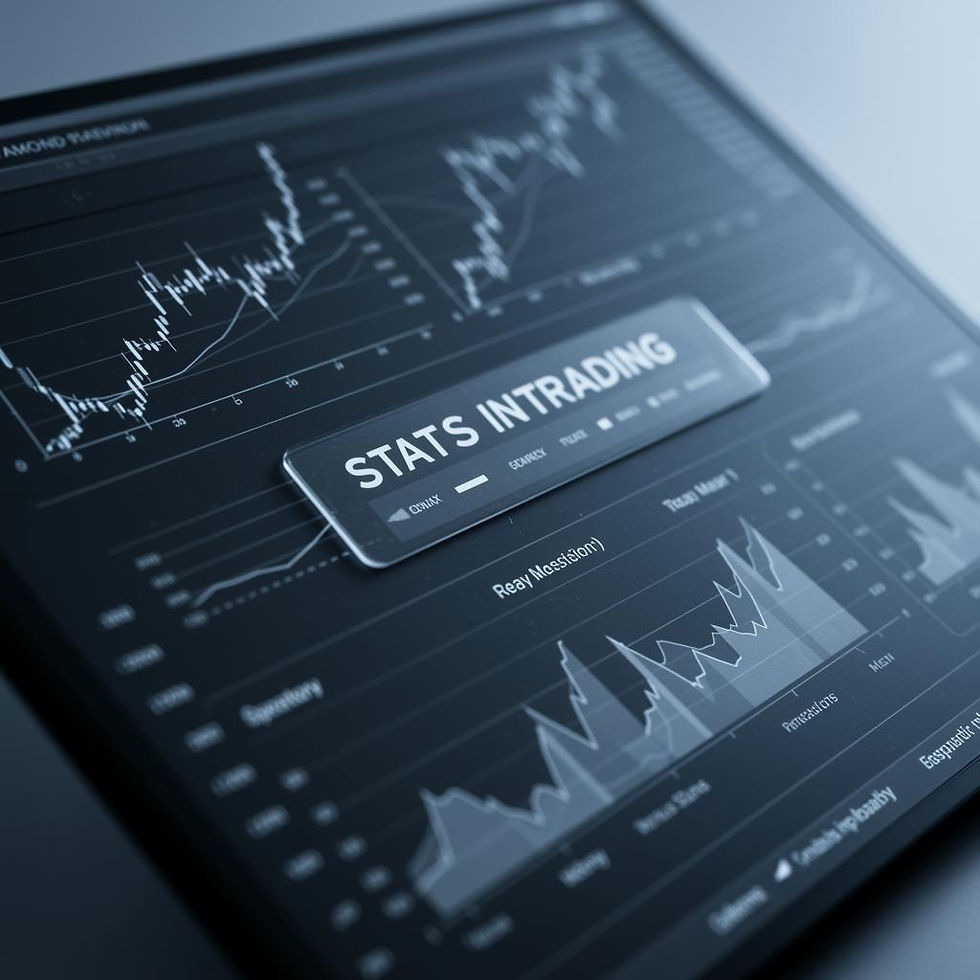Black-Scholes for Options Futures and other Derivatives
- Bryan Downing
- Mar 15
- 3 min read
The Black-Scholes model, a cornerstone of modern financial theory, provides a framework for pricing options contracts.1 While originally designed for equity options, its principles can be adapted and applied to certain options futures and other derivative instruments, offering valuable insights for high-frequency traders and quantitative analysts.

Here's a breakdown of the Black-Scholes model's application in futures and options trading, and how it can be used as a foundation for developing proprietary models:
Understanding the Black-Scholes Model
Core Principles:
The model assumes that the underlying asset's price follows a lognormal distribution.
It considers factors like the current asset price, strike price, time to expiration, risk-free interest rate, and volatility.2
It's designed for European-style options, which can only be exercised at expiration.3
Key Variables:
S: Current price of the underlying asset.4
K: Strike price of the option.5
T: Time to expiration.
r: Risk-free interest rate.
σ: Volatility of the underlying asset.
Application to Futures:
When applying the Black-Scholes model to futures, modifications are necessary. A key adaptation is the "Black 76" model, which uses the futures price itself as the underlying asset price. This is because futures contracts have unique characteristics, such as their forward pricing nature.
Applications in Futures and Options Trading
Option Pricing:
The model provides a theoretical fair value for options, allowing traders to identify potential mispricings in the market.6
High-frequency traders can use this to capitalize on short-term arbitrage opportunities.
Risk Management:
By understanding the sensitivity of option prices to various factors (Greeks), traders can manage their risk exposure.7
For example, "delta" measures the sensitivity of an option's price to changes in the underlying asset's price, while "vega" measures sensitivity to changes in volatility.8
Trading Strategy Development:
Quantitative analysts can use the model to develop sophisticated trading strategies, such as volatility arbitrage or spread trading.
By combining the Black-Scholes model with other quantitative techniques, they can create proprietary models that better reflect market dynamics.
Modifying the Black-Scholes Model for Proprietary Use
Addressing Limitations:
The original Black-Scholes model has limitations, such as the assumption of constant volatility.9
High-frequency traders and quants often modify the model to account for real-world factors like:
Volatility Skews and Smiles: Incorporating models that capture the non-constant nature of volatility.
Jump Risk: Adding components to account for sudden price jumps.10
Transaction Costs: Factoring in the impact of trading costs on profitability.
Non-Normal Distributions: Adjusting the model to handle asset price distributions that deviate from lognormality.
High-Frequency Trading Considerations:
In high-frequency trading, speed and accuracy are paramount.11
Modifications may focus on:
Optimizing the model for computational efficiency.
Integrating real-time market data to improve accuracy.
Creating models that can react very quickly to changes in market conditions.
Quantitative Analysis Enhancements:
Quants may enhance the model by:
Using advanced statistical techniques to estimate model parameters.12
Developing machine learning models to predict volatility and other key variables.13
Back testing modified models with historical data to validate their effectiveness.
Key Considerations for High-Frequency Traders and Quants
Data Accuracy:
The accuracy of the Black-Scholes model relies heavily on the quality of input data.
High-frequency traders need access to reliable, real-time market data.14
Computational Efficiency:
In high-frequency trading, speed is crucial.15
Traders need to optimize their models for fast computation.
Risk Management:
High-frequency trading involves significant risk.16
Robust risk management systems are essential to mitigate potential losses.17
In summary, the Black-Scholes model provides a valuable foundation for futures and options trading. By understanding its principles and limitations, high-frequency traders and quantitative analysts can develop modified models that better reflect market realities and enhance their trading strategies.



Comments